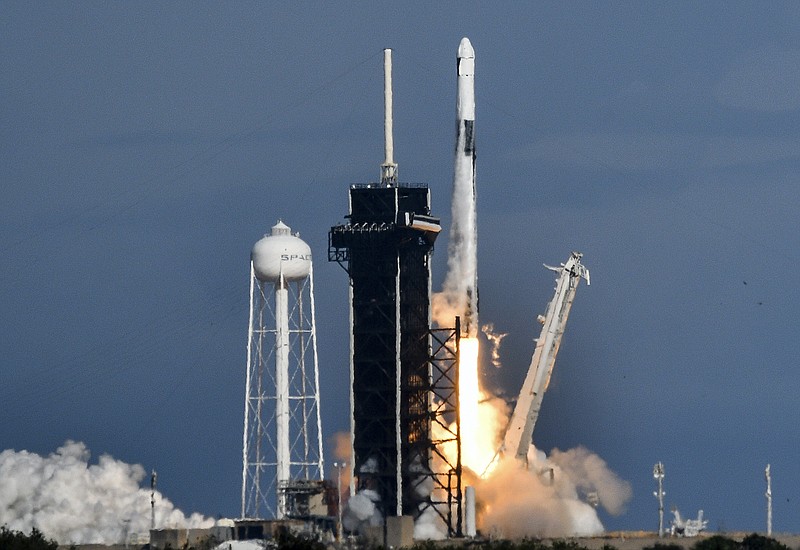ORLANDO, Fla. -- A SpaceX Falcon 9 rocket launched Saturday from Kennedy Space Center on the 52nd successful mission of the year from the Space Coast.
The CRS-26 mission lifted off from Launch Pad 39-A at 1:20 p.m. on a resupply run to the International Space Station.
A brand new cargo Dragon spacecraft is carting up 7,700 pounds of supplies including a pair of rollout solar arrays to help with power supply on the station.
"Everyone is anxious to see the science kick off as soon as docking occurs," said Jeff Arend with NASA's systems engineering and integration office for the station.
That includes a study that will let the crew grow dwarf tomatoes as well as an investigation called BioNutrients-2 -- which makes on-demand nutrients from a combination of yogurt, a yeast-based beverage and kefir, a fermented milk drink.
The first-stage booster, which also flew for the first time, was able to land on SpaceX's droneship Just Read the Instructions in the Atlantic Ocean.
The launch keeps the Space Coast on its record pace averaging more than one liftoff a week this year from the Kennedy Space Center or Cape Canaveral Space Force Station, hitting 52 in just 47 weeks with as many as half a dozen more launches that could come before Dec. 31. Last year, the Space Coast saw 31 launches.
SpaceX has managed the king's share of those with its workhorse Falcon 9 rocket with most sending up the company's Starlink internet satellites, but also providing the only human flights from the U.S. with its Crew Dragon missions, of which the company flew three in 2022.
This latest Dragon spacecraft launch is set to autonomously dock with the ISS at 6 a.m. today, alongside Crew Dragon Endurance that flew Crew-5 to the station in October. This cargo Dragon will stay docked to the station for about 45 days before returning with research and cargo for a splashdown off the coast of Florida.
With this launch, SpaceX has flown 42 Falcon 9s in 2022 as well as one of its powerful Falcon Heavy that made only its fourth launch ever Nov. 1. The United Launch Alliance added six launches of its Atlas V rocket while Astra Space managed two launches of its Rocket 3.3.
The Orion spacecraft was headed Saturday for its farthest distance from Earth -- more than 268,000 miles away -- on its distant retrograde lunar orbit as part of the multiweek mission that won't see it return to Earth until Dec. 11.
The coming year is expected to see the pace continue with more Falcon 9 launches, at least two more Falcon Heavy launches.
Also in the coming year, new rocket company Relativity Space is expected to fly with its Terran-1 rocket already testing at Cape Canaveral while Blue Origin continues efforts to get its massive New Glenn rocket ready for its first launch. Meanwhile, the United Launch Alliance plans to debut its new Vulcan Centaur rocket while continuing to fly Atlas V as well as a Delta IV Heavy from the Space Coast.
"The Space Force and NASA ... and commercial contractors are investing in infrastructure that should be able to support 100 launches a year," said Frank DiBello, president and CEO of Space Florida, the state's aerospace economic development agency. "That was our plan. "
